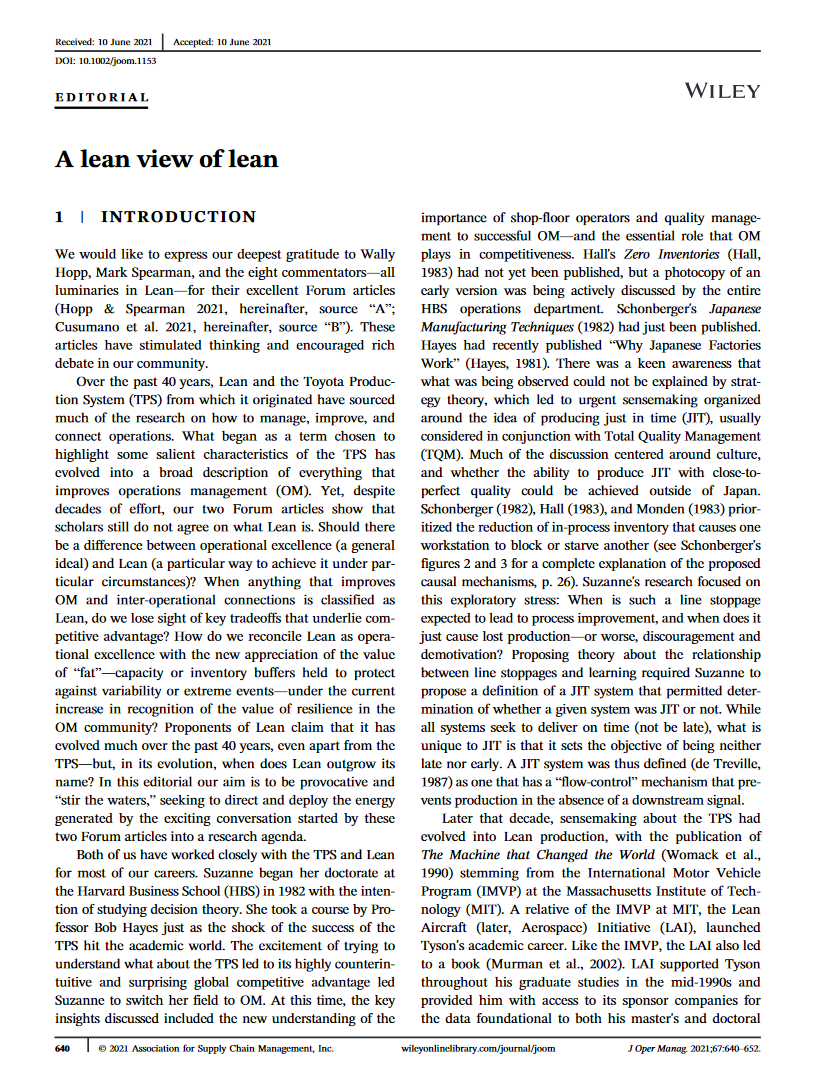 |
Over the past 40 years, Lean and the Toyota Production System (TPS) from which it originated have sourced much of the research on how to manage, improve, and connect operations. What began as a term chosen to highlight some salient characteristics of the TPS has evolved into a broad description of everything that improves operations management (OM). Yet, despite decades of effort, our two Forum articles show that scholars still do not agree on what Lean is. Should there be a difference between operational excellence (a general ideal) and Lean (a particular way to achieve it under particular circumstances)? When anything that improves OM and inter-operational connections is classified as Lean, do we lose sight of key tradeoffs that underlie competitive advantage? How do we reconcile Lean as operational excellence with the new appreciation of the value of “fat”—capacity or inventory buffers held to protect against variability or extreme events—under the current increase in recognition of the value of resilience in the OM community? Proponents of Lean claim that it has evolved much over the past 40 years, even apart from the TPS—but, in its evolution, when does Lean outgrow its name? In this editorial our aim is to be provocative and “stir the waters,” seeking to direct and deploy the energy generated by the exciting conversation started by these two Forum articles into a research agenda. |

